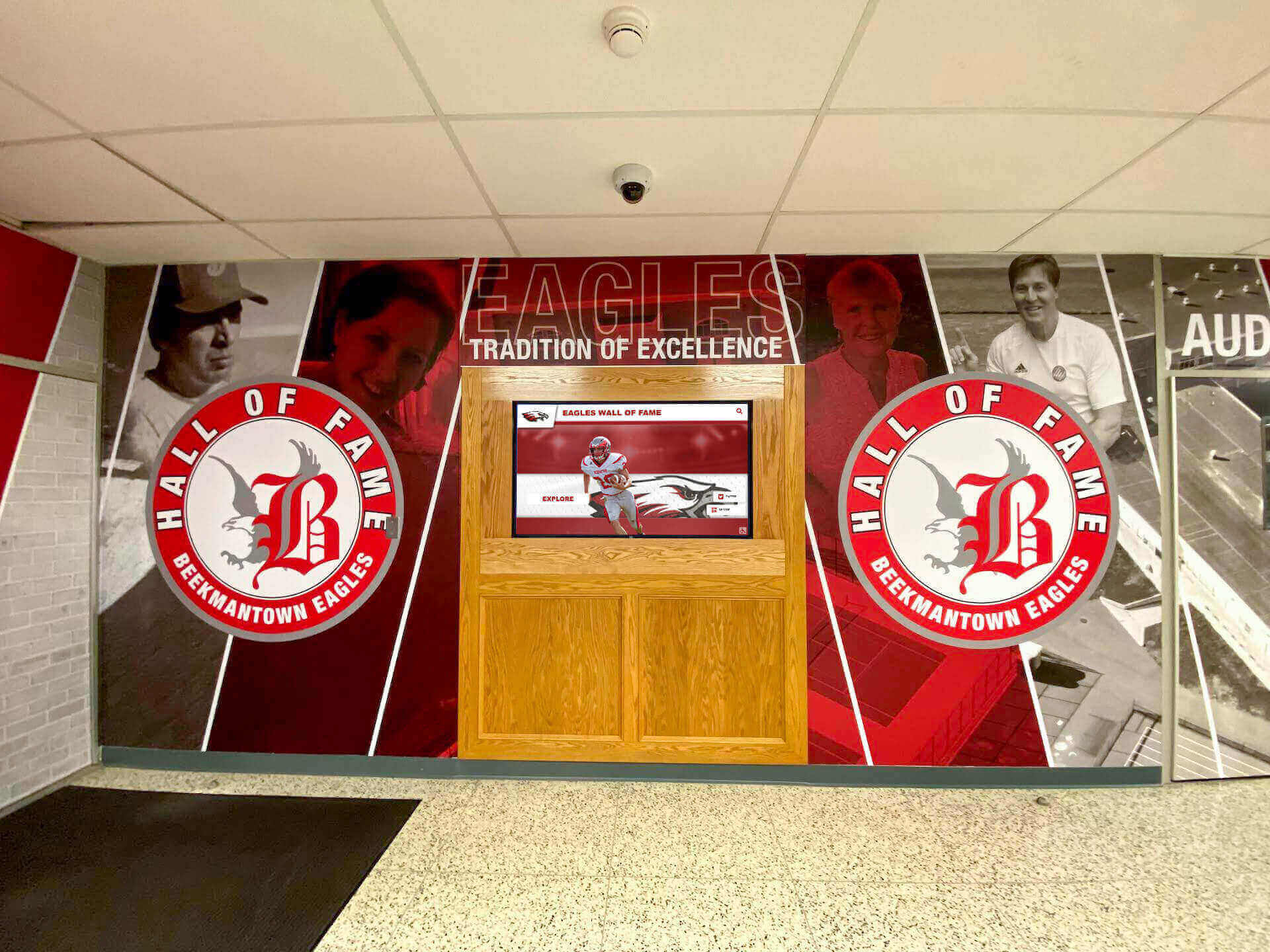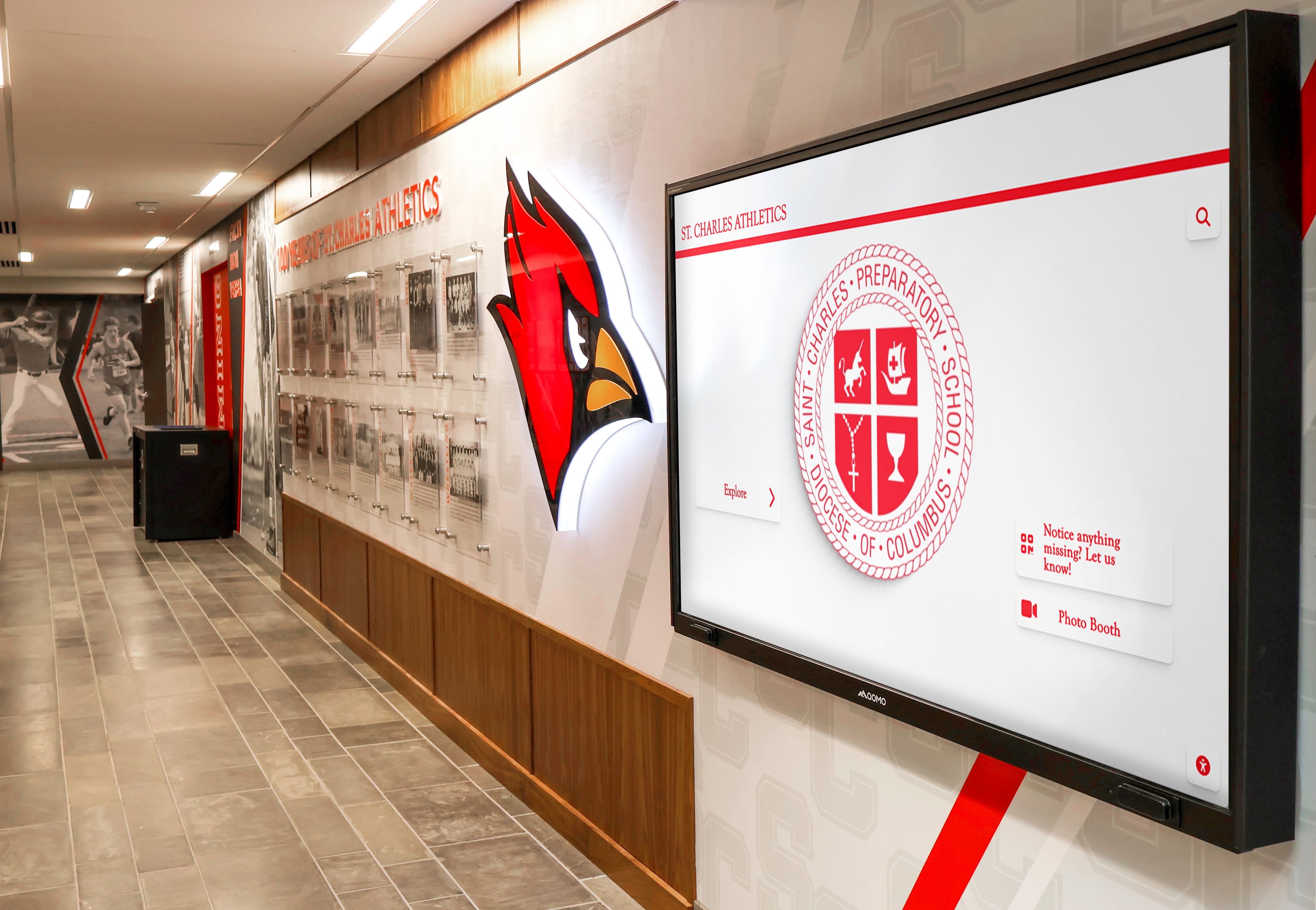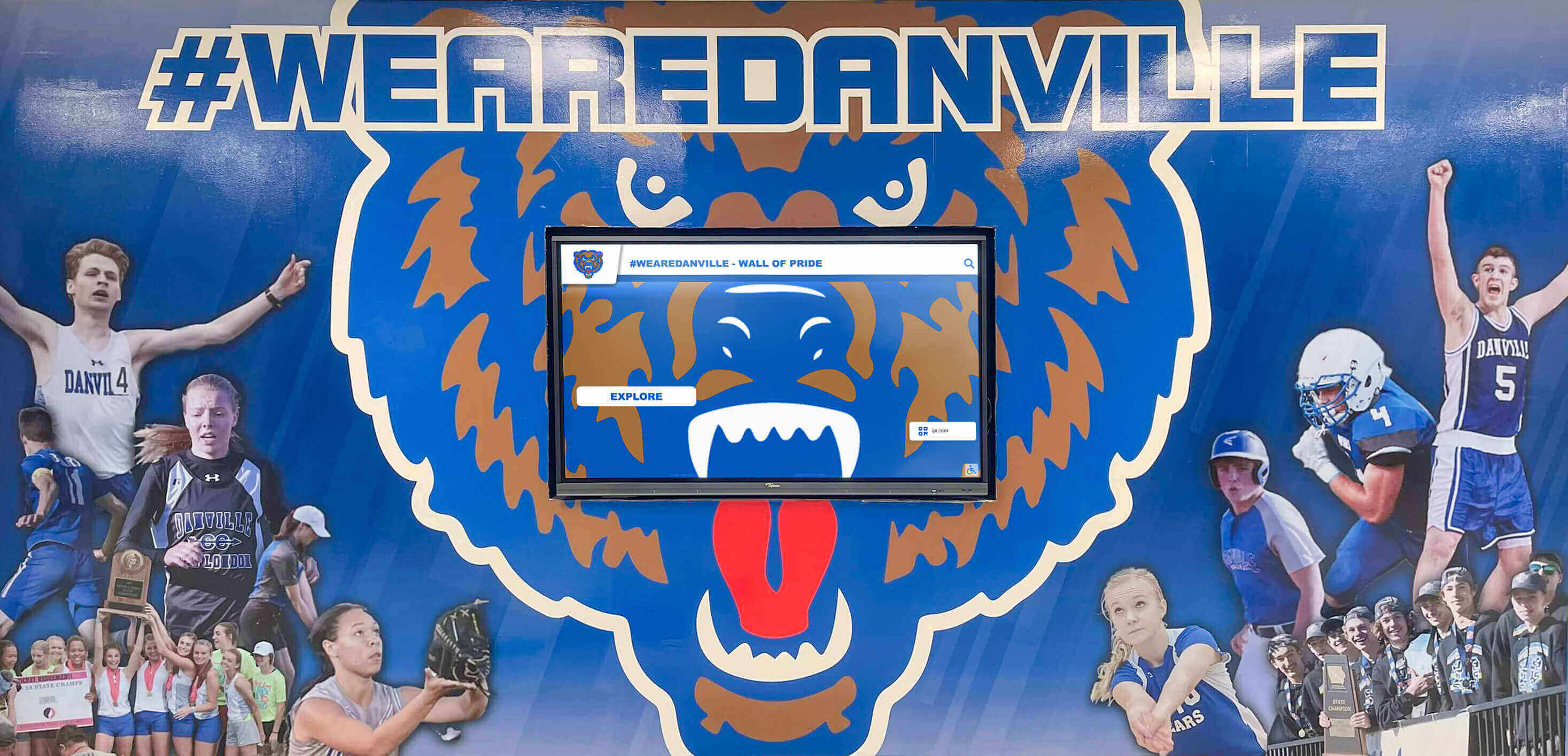Texas high school football is more than a sport—it’s a cultural institution woven into the fabric of communities across the Lone Star State. From the smallest rural towns to the largest suburban districts, Friday nights under stadium lights bring communities together in celebration of tradition, excellence, and the young athletes who carry forward a legacy spanning generations.
In Texas, high school football stadiums rival college facilities in other states, with some seating more than 18,000 spectators. The investment in programs, facilities, and athlete development demonstrates the profound importance Texans place on this sport. Athletic directors, coaches, and school administrators face unique opportunities to leverage this cultural phenomenon by implementing recognition programs that honor achievement, inspire future athletes, and strengthen the bonds between past, present, and future generations.
This comprehensive guide explores the unique culture of Texas high school football, effective recognition strategies that honor tradition while embracing innovation, and modern digital display solutions that celebrate achievements in ways that resonate with today’s student-athletes while preserving history for future generations.
The Distinctive Culture of Texas High School Football
Understanding what makes Texas high school football unique helps administrators and coaches develop recognition programs that authentically reflect and reinforce the values that make these programs special.
Friday Night Lights: More Than a Game
The phrase “Friday Night Lights” became nationally recognized through books, films, and television, but for Texans, it represents lived experience that defines community identity. Football games serve as weekly community gatherings that transcend typical athletic events, creating social, cultural, and civic touchpoints that strengthen community fabric.
Cultural Significance of Texas Football:
- Community Identity: Small towns and large suburbs alike build identity around football program success and tradition
- Multi-Generational Bonds: Alumni return to support programs decades after graduation, creating continuity across generations
- Economic Impact: Local businesses thrive on game days, with restaurants, hotels, and retail establishments benefiting significantly
- Youth Development: Football programs provide structure, mentorship, and developmental opportunities for thousands of young people
- Educational Value: The spotlight on football often drives broader community support for schools and education funding
- Social Cohesion: Games bring together diverse community members who might not otherwise interact, strengthening social bonds

The Scale and Investment in Texas Programs
Texas high school football operates at a scale unmatched in most other states. Many programs feature facilities, budgets, and organizational structures comparable to small college programs.
Texas Football Program Characteristics:
Facility Investment:
- Multi-million dollar stadium facilities
- State-of-the-art training and weight rooms
- Indoor practice facilities for weather protection
- Professional-quality video and film equipment
- Athletic training and medical facilities
- Dedicated football operations buildings
Program Resources:
- Large coaching staffs with specialized position coaches
- Full-time strength and conditioning coordinators
- Athletic training and medical support staff
- Video coordinators and film analysts
- Equipment managers and operations personnel
- Significant travel budgets for competition
This investment reflects community commitment to excellence and creates exceptional opportunities for student-athletes. Recognition programs should reflect this same commitment to excellence, ensuring that achievements within these outstanding programs receive appropriate celebration and preservation.
Championship Tradition and Competitive Excellence
Texas football has produced countless state champions, college All-Americans, NFL players, and coaches who’ve shaped the sport nationally. The depth of talent and quality of competition make Texas one of the nation’s premier high school football environments.
Texas Football Excellence:
Multiple classification divisions (1A through 6A) ensure competitive balance while creating numerous championship opportunities across school sizes. State championship games held at professional venues like AT&T Stadium in Arlington elevate the prestige of Texas high school football to unprecedented levels. The talent pipeline from Texas high schools to major college programs and the NFL demonstrates the exceptional athlete development occurring across the state.
Programs with championship tradition understand that preserving and celebrating that history inspires current athletes to add their own chapters to ongoing legacy. Digital recognition displays help schools showcase championship achievements, conference titles, playoff appearances, and individual honors in ways that traditional trophy cases cannot match.

Strategic Recognition for Texas Football Programs
Effective recognition strategies honor tradition while providing inspiration and motivation for current and future athletes.
Celebrating Individual Excellence
Texas football produces exceptional individual talent worthy of comprehensive recognition. Schools should develop systematic approaches to honoring individual achievement across multiple dimensions.
Individual Recognition Categories:
Statistical Achievements: Elite Texas programs track career rushing yards, passing yards, receiving yards, tackles, sacks, and interceptions. Single-season records demonstrate exceptional performance, while single-game performances capture memorable moments in program history. All-time statistical leaders create aspirational targets for current athletes while honoring past excellence.
Award Recognition: All-district, all-region, and all-state selections represent peer and coach recognition of exceptional performance. District and regional player of the year awards acknowledge the most outstanding athletes. State-level awards and honors provide elite recognition. College recruiting recognition celebrates athletes continuing their careers at the next level. Academic all-state honors recognize student-athletes excelling in both athletics and academics.
Milestone Celebrations: Programs should establish clear milestones worthy of special recognition—career achievements like 1,000 rushing yards, 100 tackles, or 50 career touchdowns. Iron man recognition for athletes starting both offense and defense demonstrates exceptional versatility. Multi-year letter winners show sustained commitment and contribution.
For schools looking to showcase individual achievements effectively, exploring resources on football record boards helps create engaging displays that tell complete athlete stories beyond simple statistics.

Honoring Team Success and Championships
While individual excellence deserves recognition, football remains the ultimate team sport, requiring collective effort, coordination, and sacrifice to achieve success.
Team Achievement Recognition:
Season-by-Season Records: Comprehensive season records preserve complete program history, including win-loss records, playoff results, and notable victories. Championship seasons receive special prominence with detailed documentation. Conference championships and district titles demonstrate sustained excellence within competitive regions. Playoff appearances and advancement show program quality even in non-championship years.
Championship Documentation: State championship seasons represent pinnacle achievements requiring extensive documentation—game-by-game results and statistics, championship game highlights and memorable plays, team photos and roster information, coaching staff recognition, statistical leaders for the championship season, and game-by-game narrative describing the championship journey.
Historical Context: Effective recognition connects current seasons to program history, showing how today’s teams build upon past excellence. Decade-by-decade program evolution demonstrates sustained commitment to excellence. Coaching tenure and success rates provide important historical context. Traditional rivalries and historical series records connect generations of fans.
Digital record boards enable schools to present this comprehensive team history in organized, searchable formats that traditional displays simply cannot match. Schools can learn more about implementing these systems by exploring comprehensive guides to high school football season recognition.
Recognizing Multi-Dimensional Contribution
Championship programs recognize that success requires contributions beyond on-field performance. Comprehensive recognition honors the complete ecosystem supporting program excellence.
Expanded Recognition Categories:
Coaching Excellence:
- Head coach career records and tenure
- Championship coaching achievements
- Coach of the year recognitions
- Assistant coach contributions
- Coaching staff continuity and development
- Alumni coaches returning to programs
Support Personnel:
- Athletic training and medical staff
- Strength and conditioning coaches
- Equipment managers and operations staff
- Video coordinators and film analysts
- Booster club leadership and support
- Administrative support and coordination
Academic Excellence: Football programs should prominently feature academic recognition demonstrating commitment to student-athlete development. Academic all-district and all-state recognition, team GPA achievements, college scholarship recipients, and National Honor Society members among athletes all deserve celebration alongside athletic accomplishments.

Preserving Texas Football Tradition Through Modern Technology
Texas programs have deep traditions worth preserving and sharing with current students who may not fully understand the history they’re building upon. Modern digital recognition technology helps schools honor tradition while creating engaging experiences for digital-native students.
Digital Displays for Texas Football Recognition
Digital recognition displays transform how schools celebrate football achievement while addressing every limitation of traditional trophy cases and physical displays.
Advantages of Digital Recognition:
Unlimited Recognition Capacity: Physical displays force schools to make difficult choices about which achievements deserve limited space. Digital systems eliminate these constraints entirely, enabling recognition of every state qualifier, all-conference selection, playoff team, and championship achievement across program history. Schools never face decisions about removing old recognition to make room for new achievements.
Rich Multimedia Storytelling: Static photos and engraved plaques cannot capture the emotion and excitement of Texas high school football. Digital displays integrate game highlights, championship footage, athlete interviews, coach perspectives, and historical photos that bring achievements to life in ways traditional displays never could.
Interactive Exploration: Students, families, and visitors can search for specific athletes, teams, or years while browsing casually to discover unexpected connections and inspiring stories. Interactive features enable users to explore at their own pace and according to their specific interests, dramatically increasing engagement compared to passive viewing of traditional displays.
Easy Updates and Maintenance: Adding new recognition to digital displays takes minutes through simple web-based management interfaces, compared to weeks or months required for traditional plaque production and installation. Athletic directors can update displays from anywhere—office, home, even from the sideline immediately after record-breaking performances.
Schools implementing digital recognition for football programs should explore how modern recognition solutions strengthen school pride while supporting multiple sports through unified platforms.

Optimal Display Placement in Texas Football Facilities
Strategic placement ensures maximum visibility and engagement with recognition displays.
High-Impact Locations:
Stadium Facilities: Main concourse areas where fans gather before games and during halftime provide ideal visibility. Locker room entrances ensure athletes see recognition daily during practice and game preparation. Press box and operations areas acknowledge the support personnel contributing to program success.
School Buildings: Main gymnasium lobbies connect football recognition to broader athletic programs. School main entrances demonstrate that football excellence reflects well on entire institutions. Athletic hallways near weight rooms and training facilities keep recognition visible during daily athlete activities.
Field House and Training Facilities: Weight room and training areas where athletes spend countless hours provide motivation during demanding workouts. Meeting rooms and film study spaces connect recognition to preparation and development. Medical and athletic training areas acknowledge the complete support system.
Multiple displays in various locations maximize exposure across different audiences—game-day crowds, current athletes, prospective recruits, school visitors, and community members—ensuring recognition reaches everyone with interest in program success.
Integration with Recruitment and Program Marketing
Recognition displays serve strategic purposes beyond celebration, providing powerful marketing tools for program promotion and athlete recruitment.
Recruitment Applications:
Facility Tours: Prospective athletes touring facilities see comprehensive documentation of program excellence, tradition, and athlete development. Digital displays showcase the pathways successful athletes have followed, helping recruits envision their own potential success. Recognition of college commitments and professional achievements demonstrates program quality and development capability.
Family Engagement: Recruit families evaluate not just athletic programs but also institutional commitment to recognizing and celebrating achievement. Sophisticated recognition systems communicate that schools value and honor their athletes appropriately. The ability to search for and explore specific achievements demonstrates organizational excellence and attention to detail.
Social Media Integration: Modern digital displays enable easy content sharing through social media, extending recognition reach far beyond physical campus locations. Screenshots, photos, and videos of recognition displays become shareable content that athletes proudly distribute across their networks, providing authentic peer-to-peer marketing that no paid advertising can match.

Building a Comprehensive Recognition Program
Successfully implementing recognition programs requires systematic planning, stakeholder engagement, and sustainable operational approaches.
Planning and Needs Assessment
Begin with clear understanding of objectives, resources, and constraints.
Key Planning Questions:
- What specific achievements and recognition categories should the program include?
- How much historical depth should initial implementation cover?
- What content already exists that can be digitized and incorporated?
- What staffing and resources are available for ongoing content management?
- What budget is available for initial implementation and annual operation?
- What physical locations and technical infrastructure can support displays?
- How will recognition program integrate with existing traditions and ceremonies?
Thorough assessment prevents misalignment between expectations and reality, ensuring implementations deliver desired outcomes within available constraints. Schools should involve diverse stakeholders—athletic directors, coaches, administrators, athletes, parents, and booster representatives—to ensure recognition programs reflect broad community values and priorities.
Content Development Strategies
Recognition quality depends fundamentally on content quality. Schools should develop systematic approaches to gathering, organizing, and presenting achievement information.
Content Collection Approaches:
Historical Research: Most programs have significant historical achievements that were never properly documented or have been lost over time. Effective content development includes systematic historical research through old yearbooks, newspaper archives, photo collections, coach records, and alumni interviews. This research preserves institutional memory while uncovering inspiring stories worth sharing.
Current Season Documentation: Establish processes for systematically documenting current achievements as they occur, including game statistics and performance data, photos from games and practices, video highlights of significant plays, athlete interviews and perspectives, and coach commentary providing context.
Ongoing Content Enhancement: Initial implementation shouldn’t be viewed as complete and finished. The best programs continuously enhance content by adding historical depth, incorporating new multimedia elements, expanding athlete profiles with additional context, updating alumni achievements and college careers, and rotating featured content to maintain freshness.
For guidance on managing athletic content effectively, schools can explore comprehensive guides to sports record keeping that establish best practices for documentation and organization.
Funding and Budget Considerations
Recognition program investment ranges significantly based on scope, scale, and technology choices.
Budget Components:
Initial Implementation: Complete digital recognition systems including commercial-grade touchscreen displays, computing and networking equipment, professional installation, software licensing, and initial content development typically range from $15,000-$40,000 for comprehensive installations. Many schools begin with single displays in most prominent locations, expanding to additional locations as budget allows and success demonstrates value.
Annual Operating Costs: Ongoing expenses include software licensing and support ($2,000-$4,000 annually), content updates and management, periodic content enhancement, and minor maintenance and technical support. Total annual costs typically run $3,000-$6,000, though exact amounts vary based on content complexity and update frequency.
Funding Sources: Many Texas football programs successfully fund recognition through booster club fundraising campaigns, alumni association contributions, corporate sponsorships and business partnerships, memorial and dedication opportunities, and general athletic department budget allocations. The high-profile nature of Texas football often makes recognition programs attractive funding opportunities for donors wanting visible community impact.

Best Practices from Successful Texas Programs
Learning from schools that have implemented effective recognition helps new programs avoid common pitfalls while accelerating success.
Start with Clear Goals and Metrics
Successful programs define what they want recognition to accomplish and how they’ll measure success.
Common Recognition Objectives:
- Increase athlete motivation by making achievement pathways visible
- Strengthen school and community pride through celebration of excellence
- Improve recruitment by showcasing program quality and tradition
- Preserve institutional history for current and future generations
- Enhance alumni engagement by honoring their contributions
- Support fundraising by demonstrating program investment returns
Success Metrics:
Track engagement through display analytics showing usage frequency and duration. Monitor recruitment outcomes comparing before and after recognition implementation. Measure community response through surveys and qualitative feedback. Document operational efficiency improvements in recognition processes. Assess fundraising impact related to recognition program implementation.
Prioritize Content Quality Over Technology Features
Technology amplifies content—exceptional content presented on basic systems outperforms weak content on sophisticated platforms.
Content Quality Principles:
Tell complete stories rather than just listing statistics. Include the human elements—challenges overcome, dedication demonstrated, team contributions, and lessons learned. Use high-quality photography and video that captures emotion and excitement. Provide sufficient context so achievements are meaningful to those unfamiliar with specifics. Maintain accuracy and authenticity to build credibility and trust.
Maintain Momentum Through Regular Updates
Static recognition loses impact quickly. Regular updates keep recognition current, relevant, and engaging.
Update Strategies:
Seasonal Rhythm: During active football season, update weekly with current team performance, standout individual performances, approaching records or milestones, and relevant historical connections. During off-season, focus on historical content expansion, profile enhancements, college commitment recognition, and off-season athlete achievements.
Special Event Tie-Ins: Connect recognition updates to special events like homecoming, rivalry games, playoff appearances, senior night celebrations, awards banquets, and recruiting signing days. Event-driven updates create natural promotion opportunities while maintaining recognition visibility.
Feature Rotation: Regularly rotate featured content highlighting different eras, positions, achievement types, and athlete stories. Rotation gives community members reasons to revisit displays repeatedly while ensuring broad recognition rather than repetitive emphasis on the same achievements.

Measuring Recognition Program Impact
Demonstrating recognition program value helps justify investment and secure continued support.
Quantitative Impact Metrics
Track specific measurable outcomes connected to recognition programs.
Key Metrics:
Engagement Measures: Digital display analytics reveal daily interaction counts, average session duration, screens viewed per visit, peak usage times, search terms indicating interests, and repeat visitor percentages. Strong programs typically see 3-7 minute average sessions with 15-25% repeat visitor rates.
Program Performance: Compare year-over-year participation numbers, roster sizes and quality, playoff qualification rates, championship achievements, all-district and all-state selection rates, and college recruitment and commitment patterns. While many factors influence these outcomes, effective recognition programs contribute positively to overall program trajectories.
Community Engagement: Monitor game attendance trends, booster club membership and activity, social media engagement with program content, alumni event participation, fundraising campaign success, and local media coverage quality and quantity.
Qualitative Impact Assessment
Numbers provide important information but don’t capture the complete recognition impact story.
Qualitative Research Methods:
Stakeholder Surveys: Systematically gather feedback from current athletes about how recognition influences motivation, from parents about recognition quality and program perception, from coaches about recognition utility in development and recruitment, from alumni about connection to program and institution, and from community members about pride and support.
Success Stories: Document specific examples of recognition impact—athletes motivated to break records after seeing them displayed, alumni reconnecting with programs after viewing recognition, recruit families influenced by comprehensive recognition, and community members supporting programs based on visible excellence celebration.
Comparative Analysis: Compare recognition program effectiveness to peer schools, benchmark against pre-implementation baselines, and evaluate ROI relative to other athletic department investments.
The Future of Football Recognition in Texas
Recognition technology and best practices continue evolving, creating new opportunities for enhancing how schools celebrate achievement.
Emerging Technologies
Several technological developments will shape future recognition approaches.
Artificial Intelligence: AI will enable automated highlight video creation from game footage, intelligent content recommendations based on user behavior, natural language search allowing conversational queries, and predictive analytics identifying approaching milestones worth promoting.
Augmented Reality: AR technology may allow mobile devices to overlay historical information when pointed at physical locations, create virtual trophy rooms accessible from anywhere, and provide immersive storytelling experiences connecting past and present.
Enhanced Mobile Integration: Future systems will offer seamless mobile access to all recognition content, personal athlete portfolios tracking individual achievements, parent dashboards monitoring recognition received, and social sharing optimized for maximum reach and engagement.
Evolving Best Practices
As more Texas schools implement sophisticated recognition programs, collective best practices continue developing.
Emerging Trends:
Increased emphasis on academic recognition alongside athletic achievement demonstrates commitment to student-athlete development. Greater focus on character and leadership recognition communicates that programs value complete personal development. Enhanced alumni tracking and updates show ongoing pride in former athletes’ continued success. Integration with name, image, and likeness (NIL) opportunities helps athletes leverage their recognition appropriately.
Schools should stay connected with Texas athletic director networks, participate in state association conferences, monitor recognition innovations from leading programs, and continuously gather stakeholder feedback to inform recognition program evolution.

Implementation Roadmap for Texas Schools
Schools ready to enhance football recognition should follow systematic implementation approaches.
Phase 1 - Planning (Months 1-2): Form implementation team including athletic director, football coaches, administrators, booster representatives, and selected athletes and parents. Define recognition objectives and success metrics. Assess current recognition state and historical content availability. Evaluate potential display locations and technical requirements. Develop preliminary budget and identify funding sources. Research technology vendors and platform options.
Phase 2 - Vendor Selection and Platform Configuration (Months 2-4): Request vendor demonstrations and detailed proposals. Evaluate platforms against defined requirements and budget constraints. Review contracts carefully and check references from similar schools. Select vendor and finalize technical specifications. Establish project timeline with clear milestones. Plan content structure and organization.
Phase 3 - Content Development (Months 3-6): Conduct historical research gathering achievement information. Collect photos from yearbooks, archives, and community sources. Write athlete profiles and achievement narratives. Create or gather video content. Organize content using consistent structure and quality standards. Conduct content review ensuring accuracy.
Phase 4 - Installation and Testing (Months 5-7): Complete site preparation including electrical and network infrastructure. Install display hardware and configure software platforms. Conduct comprehensive testing of all functionality. Train staff on content management and system operation. Perform soft launch with pilot user groups. Gather initial feedback and refine.
Phase 5 - Launch and Operations (Month 7+): Host grand opening ceremony generating awareness and excitement. Implement promotional campaigns driving initial usage. Monitor engagement analytics and gather ongoing feedback. Establish sustainable update processes. Continue systematic historical content expansion. Plan enhancements based on learning and usage patterns.
Conclusion: Honoring Excellence, Inspiring Future Champions
Texas high school football represents extraordinary tradition, exceptional competition, and unique cultural significance that deserves recognition matching its importance. Effective recognition programs honor past excellence while inspiring current athletes and preserving achievements for future generations who will add their own chapters to ongoing legacy.
Modern digital recognition technology enables Texas schools to celebrate football achievements comprehensively and engagingly—unlimited capacity ensuring no achievement goes unrecognized, rich multimedia telling complete stories beyond statistics, interactive exploration engaging digital-native students, and easy management supporting sustainable operations.
Key Principles for Texas Football Recognition:
- Honor tradition while embracing innovation that enhances rather than replaces what works
- Celebrate comprehensive achievement including individual excellence, team success, academic accomplishment, and character development
- Provide interactive engagement that resonates with current students while preserving history
- Implement sustainable systems with manageable ongoing operational requirements
- Measure impact demonstrating recognition value justifying continued investment
- Maintain momentum through regular updates and continuous content enhancement
- Connect recognition to strategic goals including recruitment, motivation, and community engagement
Texas football programs deserve recognition systems reflecting the exceptional quality, tradition, and community commitment that make Lone Star State football unique. Schools implementing thoughtful, comprehensive recognition create experiences that appropriately celebrate achievement while building program culture supporting sustained excellence across generations.
The athletes who wear your school’s colors, represent your community, and build upon decades of tradition deserve recognition honoring their commitment and accomplishment. Digital recognition displays provide the platform, but authentic celebration of achievement provides the meaning. Together, they create lasting legacy that inspires every young athlete who dreams of adding their name to your program’s story.
Ready to transform how your Texas football program celebrates excellence? Explore how solutions like Rocket Alumni Solutions provide comprehensive digital recognition platforms designed specifically for schools, combining intuitive content management, engaging interactive experiences, and dedicated support ensuring long-term success in honoring your athletes and traditions.




































